The Black Badge Ghost Isn't Electric, But It Drives Like A Rolls-Royce Love Letter To EVs
Rolls-Royce has long proclaimed its cars are the benchmark for luxury, but the new Black Badge Ghost feels like a yardstick for electric luxury, too. True, with its vast 6.75-liter twelve-cylinder engine this is far from a zero-emissions car, and in my time behind the wheel even its 14 mpg EPA rating seemed hopelessly optimistic. All the same, while we wait for Spectre, Rolls-Royce's first EV, I can't escape the feeling that its charms are already hiding in plain sight.
The Ghost is, more than most Rolls-Royce sedans in the company's back-catalog, a driver's car. You buy a Phantom for the back seat experience; in a Ghost, the person footing the bills is far more likely to be found behind the wheel.
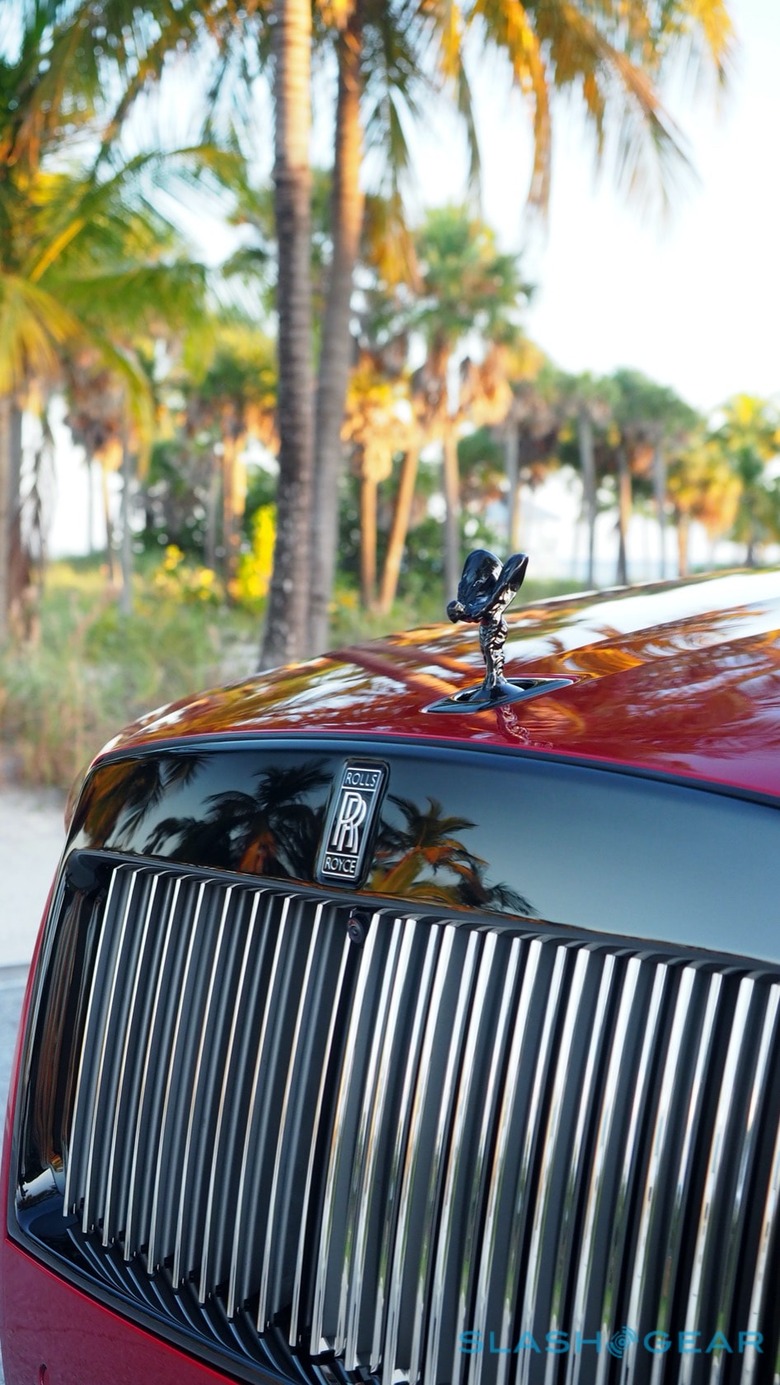
As for the Black Badge treatment, that's more than just a styling package. Despite what the name might suggest, you don't have to have your Black Badge Ghost in black, though it looks darn good that way. Rolls-Royce will finish the car in any of its thousands of paints, mix you up a completely bespoke color, and then set its craftspeople to work on the numerous rounds of hand-polishing and lacquering.
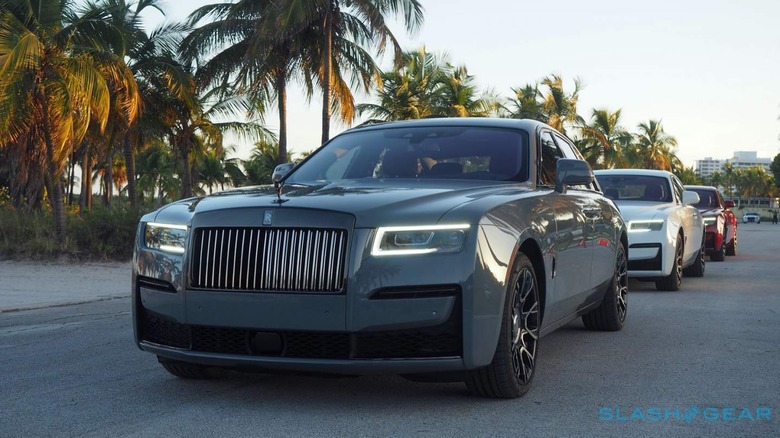
Like always, what Rolls-Royce has in mind is only the beginning. Want a neon pinstripe running the length of the sedan? Someone with an extremely steady hand will scribe that on personally. Matching duo-tone leather to contrast with the shooting-star roof lining? Absolutely, and have you considered the new carbon fiber veneer trim, a mesmeric veneer sandwich of wood, resin-coated carbon, and metal-coated thread...
The result is something exclusive, lavish, and jaw-clenchingly expensive. No Ghost is "cheap" of course, with a starting price of $393,500. The Black Badge Ghost package adds just shy of $44k to that, and by the time you've added the other typical extras along with taxes, a half-million sedan isn't unlikely.
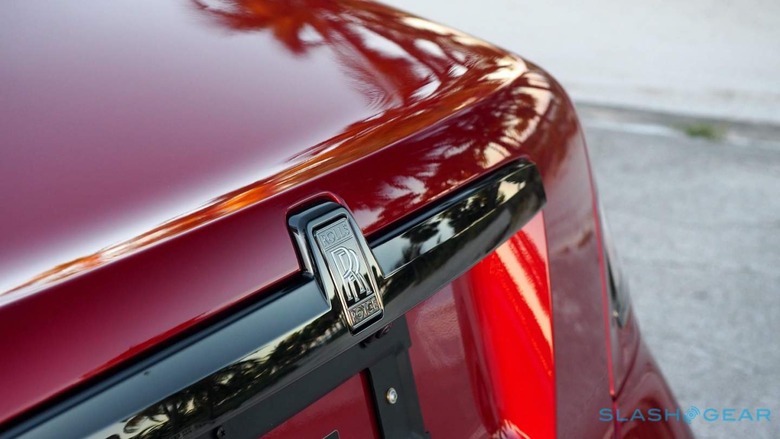
It drives like little else on the road. Where sports sedans typically involve aggressively stiff suspension, this more sinister of the Ghosts hasn't lost its trademark "magic carpet" ride. The stomping grounds of the mega-rich can suffer the same unhappy asphalt as everywhere else, but it's dialed away into someone else's problem by the air springs.
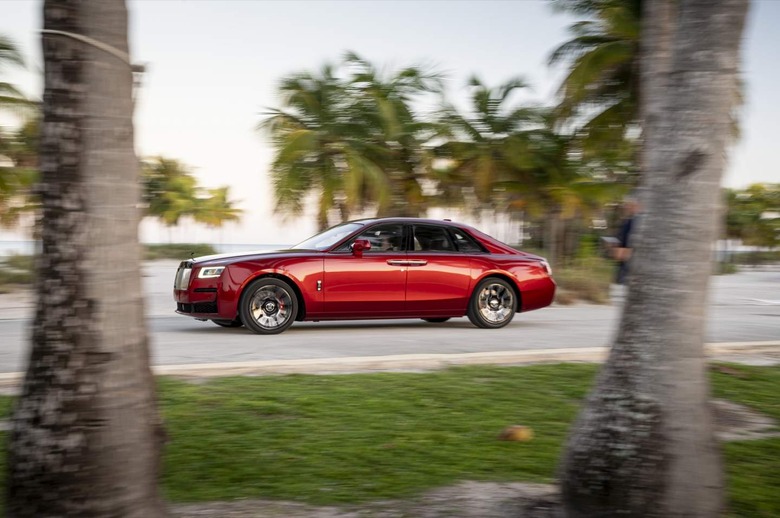
That's deeply incongruous when paired with the Black Badge Ghost's speed. The standard V12 offers a silken 563 horsepower and 627 lb-ft of torque; here, the engineers have coaxed out 591 horses and an epic 664 lb-ft. 0-60 mph comes in just 4.5 seconds, Rolls-Royce says, not only a bold accomplishment for a car that weighs almost 5,500 pounds, but one which feels all the more outlandish when this stately sedan hunkers down and hurls itself forward.
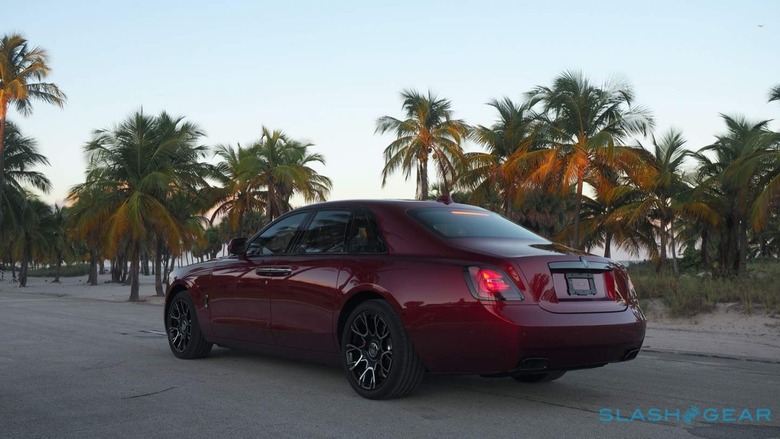
Wowing as the pace may be, it's the poise and brakes which command the most respect. Physics may be inescapable, but come the corners it seems clear that Rolls-Royce has come to some sort of arrangement there. There's far, far less roll than you'd (rightly) expect, and what remains feels measured and controlled. The same goes for the Ghost's brakes, vast enough to not be dwarfed behind the custom 21-inch wheels.
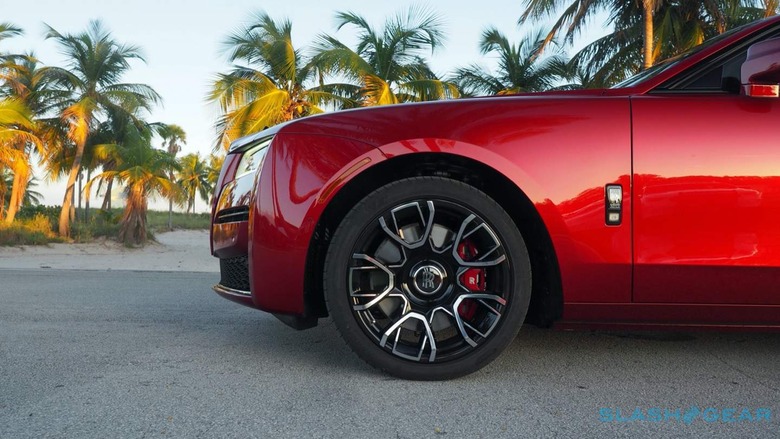
As I cruised through Miami rush-hour, sampling the Black Badge's surfeit of power with each sneaky surge between lanes and into rare gaps in traffic, it was increasingly difficult to question why the sub-brand has become such a success for Rolls-Royce. There's no sacrifice – price aside – here, no dilution of the effortless luxury the automaker is known for. You just get something that feels a little more spicy, a little more youthful. The average age of a Rolls-Royce buyer is now just 43 years, the result of a conscious effort over the past decade to make its cars more appealing to younger drivers.
Key to the continuation of that is Spectre, Rolls-Royce's first all-electric model. That won't arrive until the latter half of 2023, and so far all we've seen of the coupe EV has been heavily camouflaged, but I already feel as though I've had an early sampling of what to expect.
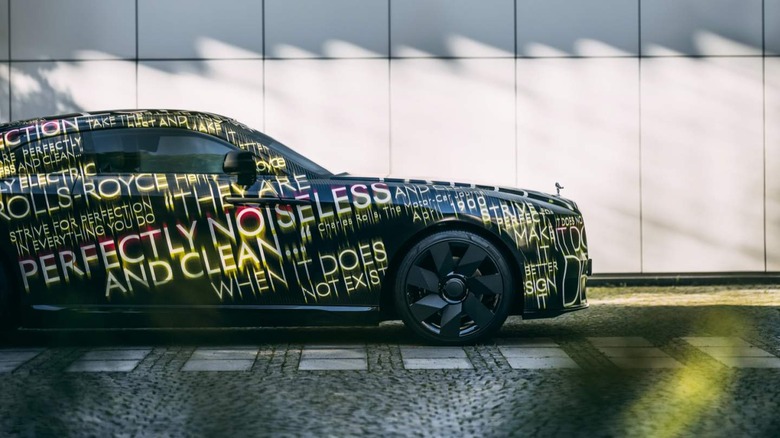
Few automakers lean so heavily – publicly and behind the scenes – on their own history books as Rolls-Royce likes to. Heritage is wielded both as a justification and an excuse: John Lennon's inky Phantom V used, for example, to settle qualms that the first Black Badge cars might not be in keeping with the company's brand. Spectre's announcement back in September may have come as a surprise, then, but Rolls-Royce had done its homework beforehand.
Both Sir Henry Royce and Charles Rolls – founders of the car company – had electrification on the brain. Rolls even predicted EVs would be the future of transportation, declaring in 1900 that the "perfectly noiseless and clean" electric car with "no smell or vibration" was an inevitability. Albeit, he added at the time, when the charging infrastructure was ready for that.
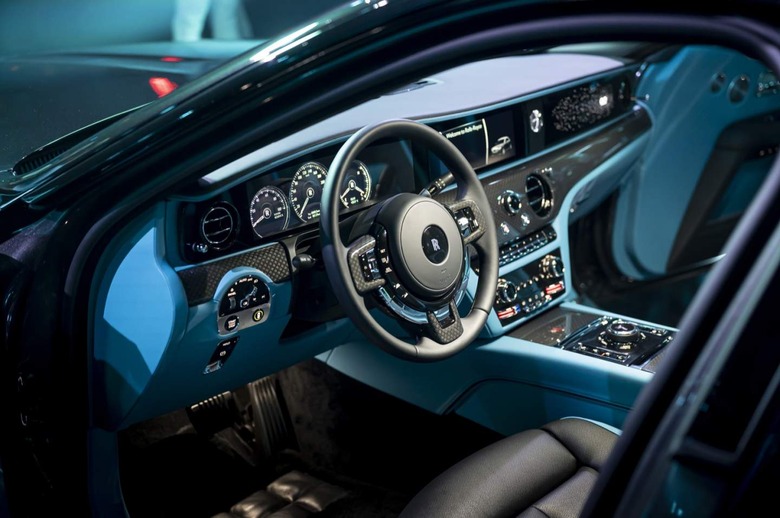
You might not expect it, but Rolls-Royce is perhaps the readiest of the automakers to actually embrace electrified drivetrains. For all that the modern V12 engine – all 6.75-liters of it – is instrumental to the Black Badge Ghost's potent excess, it's also fairly well hidden from the driver themselves. Damped and acoustically distanced, its mechanical thrumming doesn't even present itself on the dashboard: instead of engine speed, there's a coy "Power Reserve" gauge that measures remaining headroom as a simple percentage.
For a company with, effectively, one engine – albeit tuned variously – then, Rolls-Royce has been oddly prescient about how it presents the power on tap. The same goes for the eight-speed transmission, which even in the more-urgent "Low" mode still slurs through its ratios as though the physical movement of cogs is something to be ashamed of.
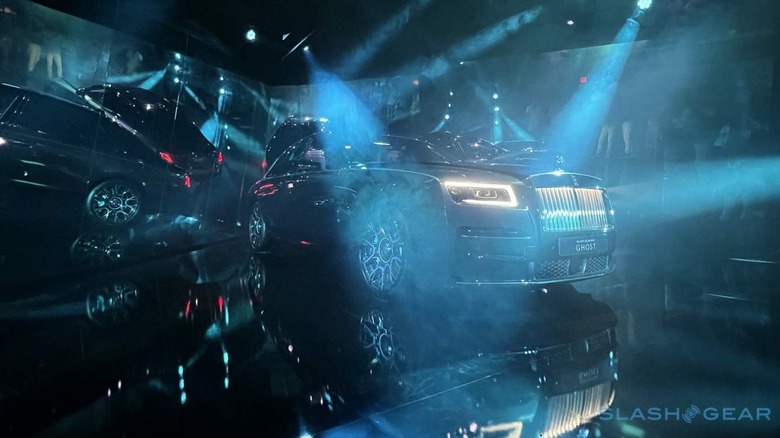
What's most distinct about Rolls-Royce's electrification strategy, then, is how overt it's being about it all. The obvious, easiest route to an EV would've been to oust the engine from a Ghost or a Cullinan, and swap in some electric motors and a beefy battery. Indeed that straightforward approach was attempted a full decade ago, CEO Torsten Müller-Ötvös pointed out to me in an interview with SlashGear, with the Rolls-Royce 102EX prototype combining a Phantom with twin electric motors.
"The reason was just to get some feedback from our clients: what do you think, how does it fit?" Müller-Ötvös explained. "And one clear message was, it fits perfect. It was not sufficient in terms of range, and it took ages to charge the car and so on, so definitely not on Rolls-Royce levels. But now, the technique is ripe, and it's at a state that it can be encapsulated in a Rolls-Royce."
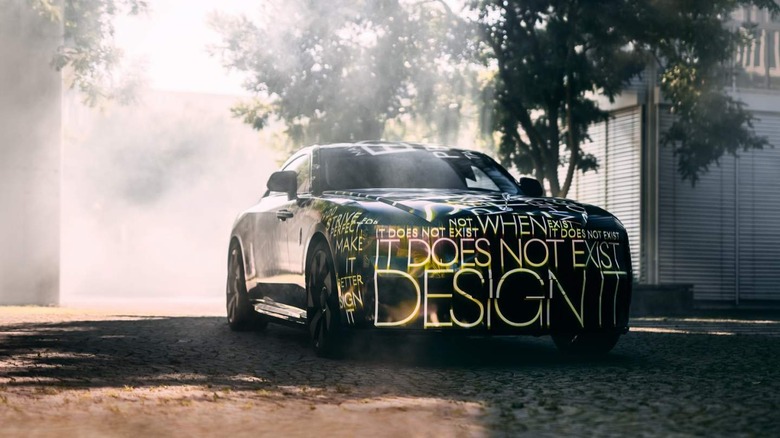
For the first production electric Rolls-Royce, however, the current line-up is gaining a new model rather than existing cars adding an extra drivetrain option. Not only that, but a conscious decision to buck the popularity of SUVs and make Spectre a sports car instead.
"We wanted to position electric in a very emotional way," Müller-Ötvös insisted. "I think there was never ever the idea to convert an existing limousine or SUV into an electric car: that is, sorry to say, boring. So we thought it's great to come with a complete new concept. Yes, it's a coupe, but it's definitely not a Wraith: it is Spectre. And it is not a Wraith successor, it's a very, very different car. How it drives, how it feels, how it looks, and how it talks to you."
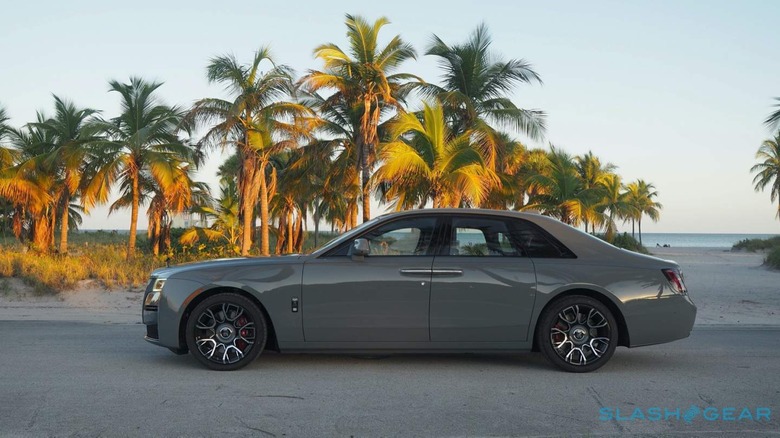
In a sense, Rolls-Royce has an easier time of things with the electric evolution than others in the auto industry. Pricing for Spectre hasn't been announced yet – though that hasn't stopped eager would-be owners already putting down deposits – but it's not like a half-million dollar coupe would be out of place in the showroom. Rolls-Royce buyers aren't exactly getting hung up on the amount of the EV tax credit, either, and while they're demanding they're also used to paying for that attention to detail.
In short, the same dynamics which make the Black Badge Ghost so appealing are equally at play for Spectre. Indeed you could make a fairly convincing argument that the sporting sedan is the pinnacle of Rolls-Royce's decades-long efforts to replicate the refinement of electric luxury, despite being forced to work around internal combustion's obstacles there.
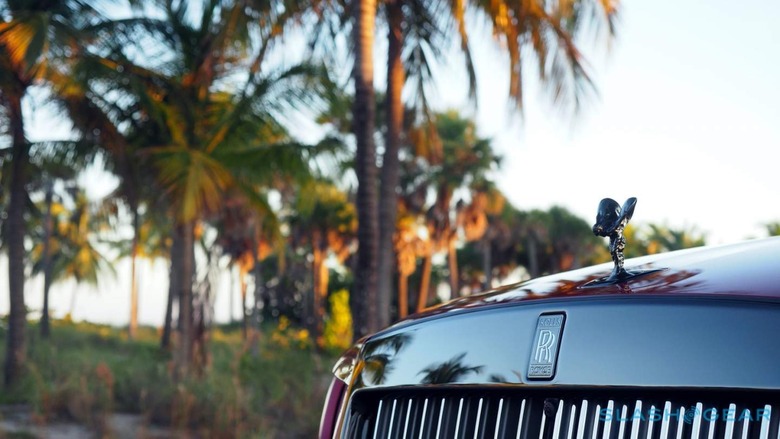
For the moment, the Black Badge Ghost is the finest of the Ghosts, and makes a compelling case for being the best in Rolls-Royce's current range. All the same, it's hard not to see it as a preemptive – and promising – benchmark for Spectre, and all the other EVs the automaker has in mind as it prepares to go fully electric by 2030.
